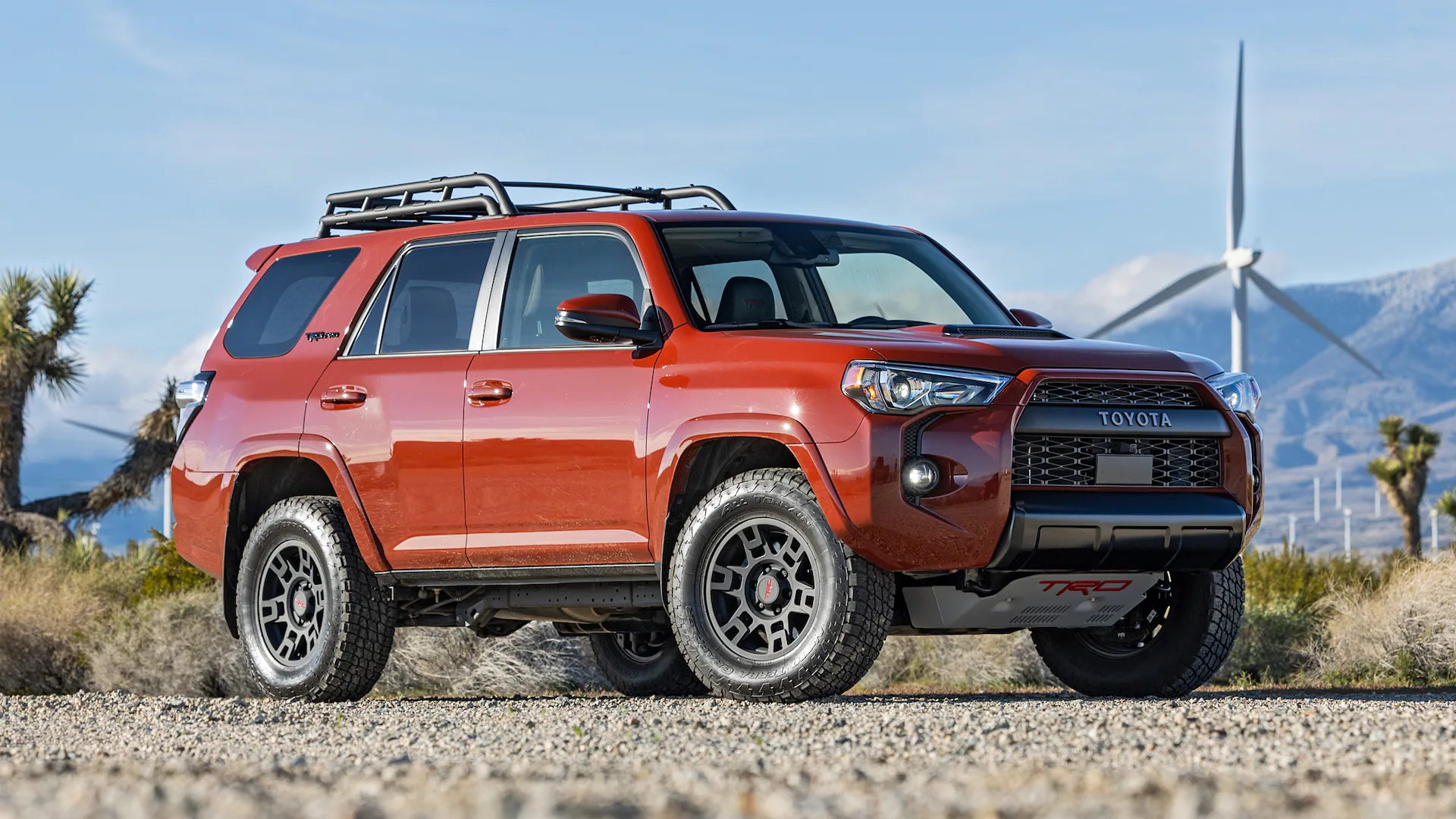When it comes to buying a vehicle, most of us focus on the big-ticket items—engine performance, gas mileage, safety ratings, infotainment systems, and even curb appeal. But the often-overlooked factor that becomes painfully obvious after the honeymoon phase is over is interior durability, particularly the condition of the seats.
Whether you’re commuting daily, transporting pets and kids, or taking road trips across harsh climates, your vehicle’s upholstery takes a beating. Cracked leather, peeling vinyl, and sagging cloth can make even a high-performing vehicle feel worn and neglected long before it hits high mileage.
Upholstery is more than just an aesthetic detail. It’s the daily interface between driver and machine, where comfort meets longevity. It’s what you see, feel, and experience every time you step into your car. And over the years, it has become one of the most visible indicators of how well a vehicle has aged.
Quality materials—leather that softens rather than cracks, cloth that resists stains and pilling, synthetic surfaces that don’t peel like stickers—are essential for maintaining both resale value and driving enjoyment.
Yet not all automakers get it right. Some brands have made upholstery a point of pride, investing in innovative materials like vegan-friendly synthetics or premium-grade cloth that can handle tough environments.
Others, often in the pursuit of cost-cutting or aesthetics over substance, have cut corners, leaving customers with seats that degrade in a matter of years, regardless of how well they’re maintained. For those who plan on keeping their vehicle long-term, or even for just the duration of a lease, knowing which vehicles will age gracefully inside is crucial.
In this article, we dive into ten popular vehicles: five that stand out for their exceptional upholstery durability, and five that are frequently criticized for premature wear, peeling, cracking, and general decline.
These aren’t obscure models either; we’re looking at mainstream vehicles that dominate the used and new car markets. Some of them may surprise you—cars that outwardly seem premium but hide cheap interior shortcuts, or rugged vehicles that quietly offer some of the best seats in the business.
Each section explores real-world durability based on material selection, seat structure, climate resilience, and how well the upholstery holds up under repeated use.
We’re not only examining leather vs. cloth, but also how manufacturers reinforce stitching, design seat shapes, and protect against environmental factors like UV rays and humidity. This isn’t about aesthetics alone—this is about practicality, comfort, and value retention.
It’s also worth noting that upholstery problems aren’t always immediately visible when shopping for a car. Cracking and peeling may not show up until a few years down the road.
By the time they do, warranty coverage is often expired and reupholstering costs are out-of-pocket. For vehicles with a reputation for upholstery failure, this hidden cost can become a major financial and cosmetic issue.
So, whether you’re someone who demands a clean, low-maintenance interior or you’re just tired of dealing with peeling seats and sagging fabric, this guide is for you. We’ve separated the winners from the disappointments to help you make a more informed decision.
If you’re in the market for a new or used vehicle, understanding which models offer upholstery you can rely on could be the difference between loving your car and loathing its interior every time you climb inside.
Let’s begin with the winners—the five vehicles that consistently deliver interiors with materials that resist the elements, endure daily wear, and still look good years after they roll off the lot.
Also Read: 5 Cars With Gloveboxes That Last and 5 That Always Jam
Vehicles With Durable Upholstery
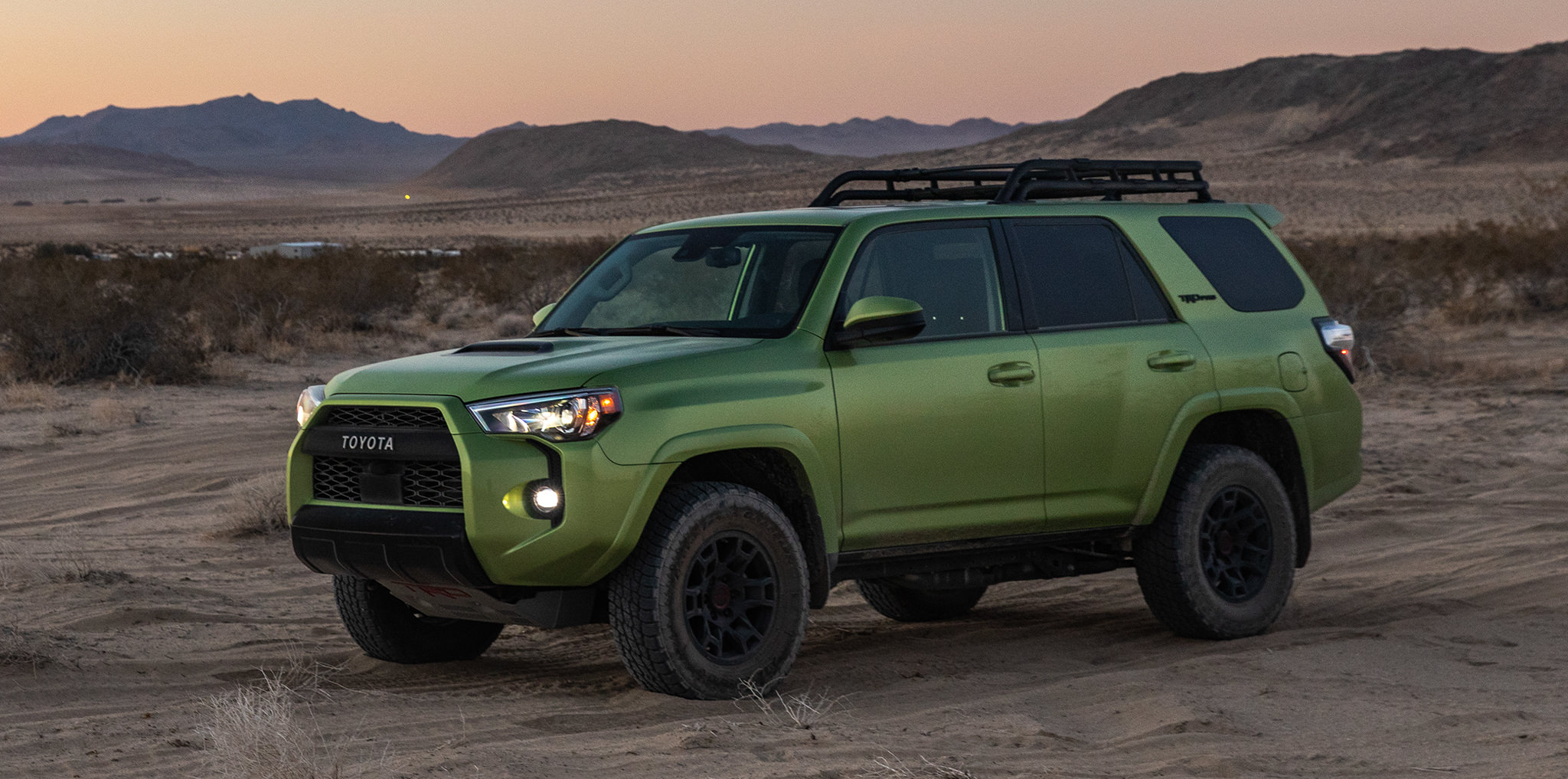
1. Toyota 4Runner
The Toyota 4Runner has earned its place in automotive history as one of the most dependable SUVs on the road—and this reliability isn’t just under the hood. The 4Runner’s interior is engineered with the same philosophy: simplicity, toughness, and long-term endurance. One of the standout elements of this durability is the upholstery. Whether you choose the base trim with heavy-duty cloth or a higher trim with Toyota’s proprietary SofTex material, you’re getting surfaces that can handle real-world abuse.
SofTex is a synthetic leather-like material developed by Toyota as an eco-friendly, resilient alternative to natural leather. Unlike genuine leather, which can dry, crack, or discolor over time, SofTex retains its appearance for years with minimal maintenance.
It’s designed to resist spills, stains, UV rays, and temperature fluctuations—all of which are common threats to vehicle interiors. Many 4Runner owners in hot states like Arizona or Texas report that their SofTex interiors look nearly new even after 5–10 years, a testament to its UV stability and material flexibility.
Toyota’s cloth upholstery, available on lower trims like the SR5, is similarly robust. The fabric is tightly woven and moisture-resistant, making it a good match for drivers with kids, pets, or messy gear. It doesn’t pill easily, doesn’t trap odors, and is easy to vacuum and clean.
It’s the kind of no-nonsense material that reflects the 4Runner’s utilitarian design. In environments where grime, sand, snow, or mud are part of everyday life, this cloth proves its worth by maintaining integrity despite constant cleaning and heavy use.
The seat construction also plays a major role. The cushions hold their shape well, resisting sagging or the dreaded “seat compression” effect that happens in less durable vehicles. Toyota ensures seams are reinforced and avoids over-designing the upholstery—there’s less unnecessary stitching or contoured shaping that could cause stress points. Even the back seats in a 4Runner, which are often folded, leaned on, or used as cargo barriers, tend to retain their shape and texture better than most competitors.
Another reason the 4Runner’s interior lasts is the brand’s consistent build quality. Toyota does not make drastic changes year to year unless it’s for the better. This consistency ensures the upholstery materials are tried and tested over time, and owners can expect similar quality even in different model years. For anyone planning to keep their SUV long-term or use it in demanding environments, the 4Runner’s upholstery offers peace of mind that it won’t fall apart or lose value prematurely.

2. Honda CR-V
The Honda CR-V has long been a benchmark in the compact SUV segment for its practical design, fuel efficiency, and long-term reliability, but its durability extends to its cabin as well.
Honda’s commitment to quality interiors, especially in the upholstery department, makes the CR-V a top pick for those who want a vehicle that maintains a clean, professional appearance even after years of use. Whether you go for cloth or leather, you’ll find the CR-V’s seating materials are engineered with real-world usage in mind.
The cloth upholstery in base and mid-trim models isn’t the kind you find in budget cars. It’s thick, tightly woven, and engineered to resist stains and fading. Honda’s cloth seats have a reputation for resisting wrinkling, stretching, and pilling, even when subjected to daily wear from families, commuters, and pet owners.
Unlike thinner fabrics that lose color and texture over time, the CR-V’s cloth feels as good after five years as it did on day one. It’s also breathable—important for hot climates where synthetic seats can trap heat. On higher trims, Honda offers genuine leather seating that blends softness with strength. The leather is treated with a protective coating that makes it resistant to cracking and drying out.
Even with minimal maintenance, CR-V leather seats hold up surprisingly well, particularly when compared to some competitors’ lower-grade leather or bonded alternatives. Owners consistently note that the bolsters and seat edges, which are most prone to wear, remain intact even after high mileage.
Honda’s interior ergonomics also contributes to long-term durability. The seats are well-contoured without being overly sculpted, which prevents stress points in the upholstery. Additionally, Honda avoids using sharp or abrasive hard plastics near seat edges, reducing friction-related damage over time.
The cabin layout itself is intuitive and clean, minimizing unnecessary rubbing or snagging of upholstery against fasteners or moving components like seat adjusters or door panels.
Finally, longevity in the CR-V’s interior comes from thoughtful design and conservative material choices. Honda doesn’t go overboard with glitz or gimmicks. Instead, it selects fabrics and leathers that are meant to last, prioritizing durability and comfort over flash.
This philosophy pays off in ownership: thousands of CR-Vs on the road today still feature nearly pristine interiors even after 100,000 miles. For buyers who want their car to look and feel like new years down the line, the CR-V offers peace of mind that few competitors match in its class.
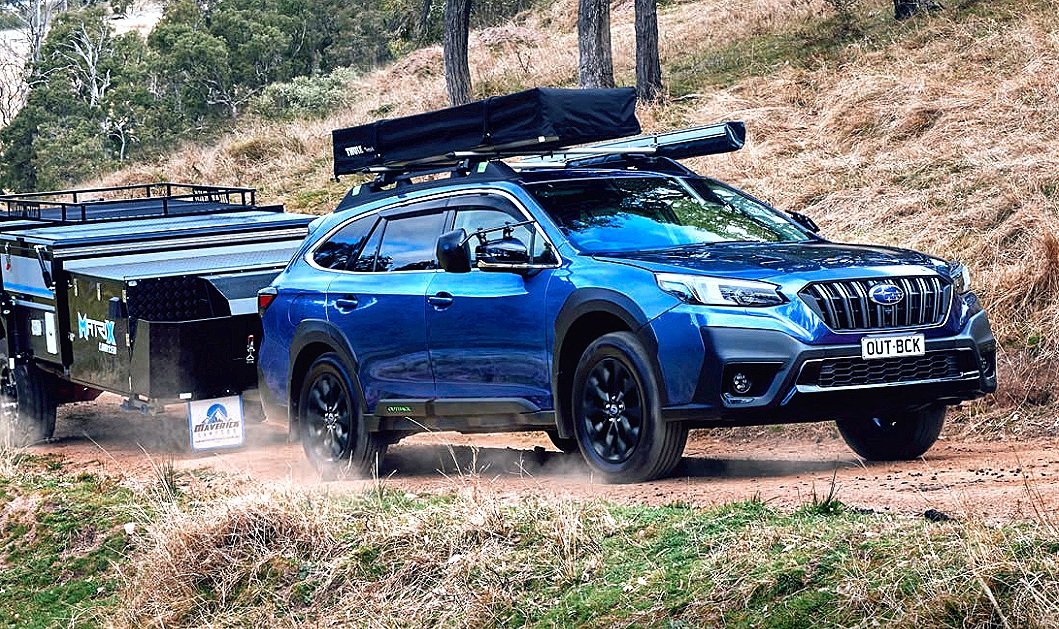
3. Subaru Outback
The Subaru Outback is often described as the vehicle of choice for outdoor lovers, dog owners, and those who live in rugged or mountainous areas. That kind of customer base demands more than off-road performance—they need an interior that can handle dirt, water, sun, snow, and the occasional spilled latte.
Fortunately, the Outback’s upholstery lives up to its reputation for adventure-readiness. Subaru has invested in materials that won’t degrade easily, no matter where you take the vehicle.
For years, Subaru offered traditional cloth in the lower trims of the Outback, and it remains one of the best in its category. The fabric isn’t just tightly woven—it’s reinforced to resist snags, stains, and fraying. The darker color palettes help hide dirt and wear, and they’ve incorporated subtle patterns that make discoloration from sun exposure less noticeable. The cloth doesn’t get excessively hot or cold and doesn’t absorb odors easily, making it ideal for those who regularly have pets or gear in the back seat.
Subaru’s real breakthrough came with the introduction of StarTex upholstery, an eco-friendly, vegan synthetic leather used in newer trims. StarTex was designed with adventure in mind—it’s water-resistant, antimicrobial, and easy to clean with just a damp cloth.
More importantly, it’s incredibly durable. Unlike bonded leather or traditional faux leather, StarTex doesn’t peel, crack, or harden with age. It holds up against mud, UV rays, and sharp pet claws. Many owners describe it as “the perfect blend of form and function,” especially for active lifestyles.
Another plus in the Outback is its seat structure. Subaru builds seats that are supportive and resistant to collapsing, which helps maintain the integrity of the upholstery. Reinforced bolsters, flat cushions, and smart seam placement reduce stress on specific areas of the material.
Plus, Subaru’s attention to cabin airflow and temperature moderation means the seats aren’t exposed to extreme interior temps that can age upholstery prematurely.
The Outback’s upholstery design reflects Subaru’s understanding of its customer base. This isn’t a car meant to sit in a showroom—it’s meant to be used. Whether you’re hauling a kayak, loading up camping gear, or traveling with dogs after a hike, you don’t have to worry about damaging the seats. That level of trust in a vehicle’s materials is rare and is one of the many reasons the Subaru Outback has such a loyal following.
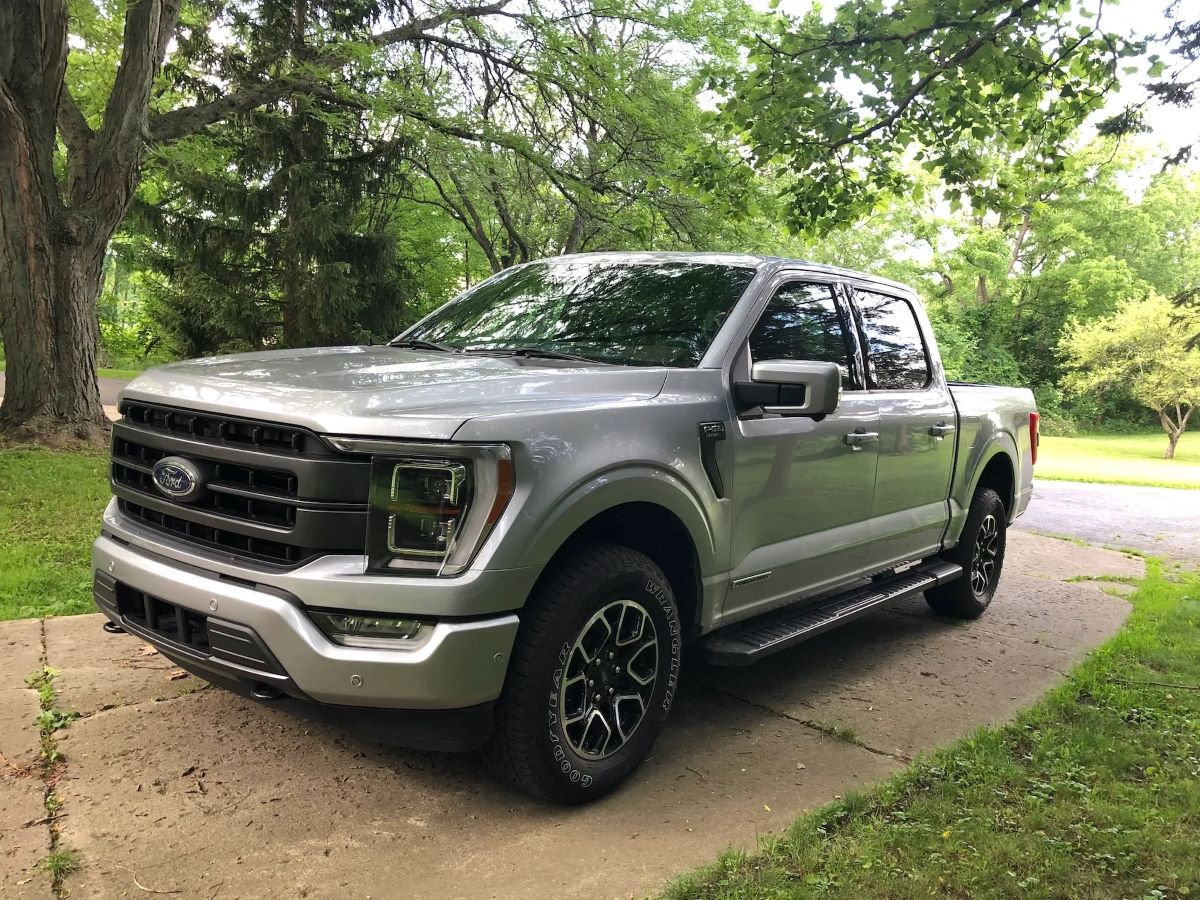
4. Ford F-150
America’s best-selling vehicle, the Ford F-150, isn’t just known for its raw power and capability—it’s also a leader when it comes to interior durability, especially the upholstery. Ford knows their trucks are driven by tradespeople, outdoor workers, and those who live in tough conditions. That’s why the F-150 comes equipped with some of the most rugged and wear-resistant upholstery options in the segment, from heavy-duty vinyl to resilient cloth and high-quality leather.
The base trims of the F-150 are often equipped with vinyl seats, designed to take punishment and clean easily. These are not the old-school slippery vinyls of decades past—modern vinyl in the F-150 is textured, thick, and UV-resistant.
It doesn’t tear easily, doesn’t warp with temperature changes, and can be wiped down quickly after a muddy workday. If you’re buying an F-150 for utility, this option is nearly bulletproof in terms of wear and tear.
Mid-range trims come with a durable cloth that Ford has carefully refined over generations. It’s tightly knit and treated to resist stains, making it great for families and field work alike. The F-150’s cloth seats also hold up well under frequent in-and-out movement—an important detail for truck owners. Ford reinforces the stitching and cushions to reduce wear on edges and bolster seams, where cracking or splitting is common in other vehicles.
In higher trims like the Lariat, King Ranch, and Platinum, you’ll find some of the best truck leather in the industry. These full-grain hides are treated with UV and moisture protection, and they age gracefully rather than degrade.
Unlike cheaper leathers that become brittle over time, the F-150’s premium leather develops a natural patina and resists cracking thanks to its thickness and quality. Owners who condition the seats even occasionally report beautiful interiors even after a decade of use.
The seat design in the F-150 also helps. Flat, broad seat cushions distribute weight evenly and reduce concentrated stress on the upholstery. Plus, many trims include ventilated seating, which prevents moisture buildup and helps maintain material elasticity. Whether you’re using your truck for work, hauling, or luxury cruising, the F-150’s upholstery meets the moment—and keeps the interior looking sharp, year after year.
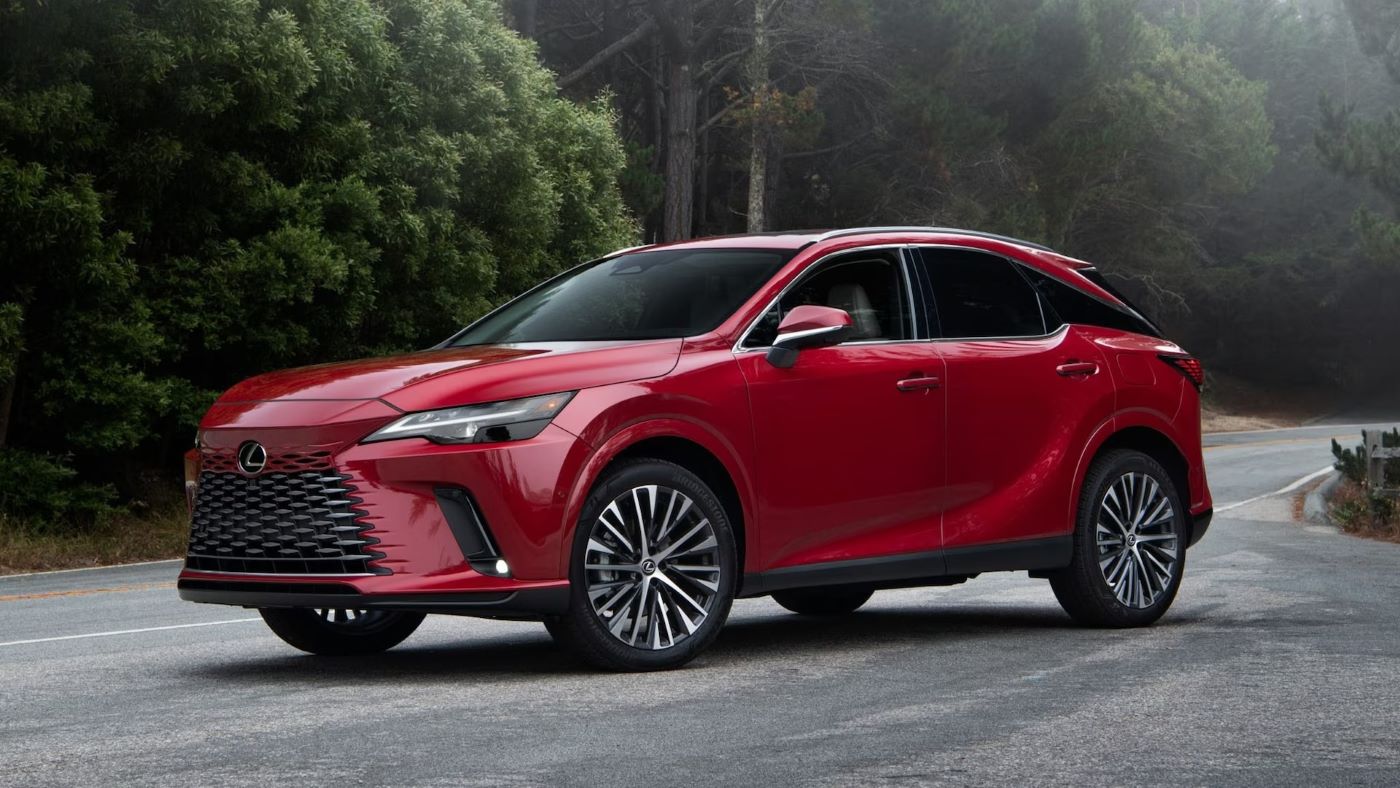
5. Lexus RX
Lexus has long been synonymous with luxury, but unlike some premium brands that sacrifice durability for aesthetics, the Lexus RX manages to deliver both. Known for its silky-smooth ride, whisper-quiet cabin, and plush features, the RX also boasts one of the most resilient interiors in the luxury crossover market. The upholstery, whether in leather or the premium NuLuxe synthetic material, is engineered for longevity.
NuLuxe, Lexus’s proprietary faux leather, has been a standout success. Used in most RX base trims, NuLuxe offers the visual appeal of leather with greater resistance to wear and environmental damage. It doesn’t crack like cheaper synthetics and is less sensitive to temperature changes. Because it’s more breathable than traditional vinyl-based faux leathers, it doesn’t suffer from sweat staining or stickiness either. And in terms of feel, most drivers report they can barely tell it apart from real leather.
Higher trims of the RX feature genuine semi-aniline leather, among the most luxurious in the industry. Yet even this soft leather is treated with a protective coating that enhances durability without diminishing the tactile experience.
Lexus does an exceptional job sourcing high-quality hides and conditioning them to retain flexibility, even after years of exposure to heat and pressure. The seats in older RX models often look surprisingly fresh, a sign of Lexus’s material excellence.
Lexus also excels at detail work that preserves upholstery life. Seams are strategically placed to reduce tension, stitching is double-reinforced, and seat shapes are designed to support occupants evenly, preventing over-compression in stress-prone zones. The RX’s climate control system further aids longevity by maintaining stable cabin temperatures, which minimizes upholstery stress due to thermal expansion and contraction.
Lastly, Lexus’s customer base tends to be meticulous, and the brand responds by building interiors that can stay pristine under both careful and casual use. Whether you’re driving 10,000 or 100,000 miles, the RX’s interior rarely shows its age. For anyone wanting luxury that lasts, not just looks good when new, the RX is a gold standard in interior craftsmanship and upholstery resilience.
Vehicles Whose Upholstery Peels and Cracks Easily
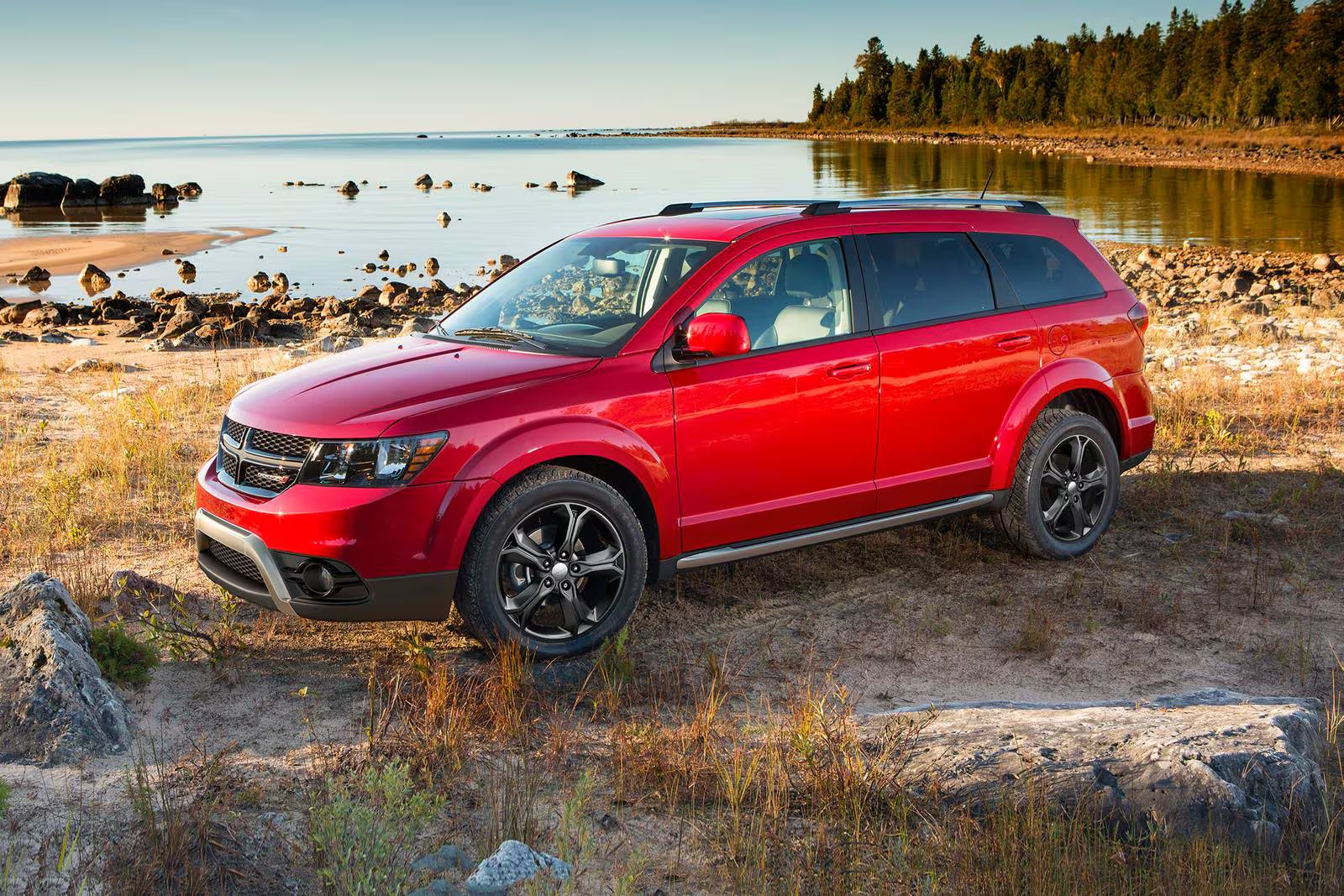
1. Dodge Journey
The Dodge Journey was marketed as a family-friendly crossover with a budget price and decent features, but one of its most glaring weaknesses lies in its interior materials. From the outset, the Journey used low-cost upholstery, especially in base and mid-trim models, that prioritized appearance over longevity.
Both the cloth and synthetic leather options are notorious among owners for degrading quickly, with visible cracking and peeling occurring far sooner than expected. Many owners report upholstery failure within three years, sometimes even earlier in hotter climates.
The Journey’s synthetic leather—often referred to as leatherette or vinyl leather—has a thin, laminated surface that looks good on the showroom floor but fails under real-world conditions. This type of material lacks the flexibility and durability of genuine or high-end synthetic leather, and it tends to dry out with heat and sun exposure. As the material loses its elasticity, the laminated top layer separates from the base, leading to flaking and peeling. The side bolsters, where drivers slide in and out daily, are particularly vulnerable to early wear.
Environmental exposure plays a huge role in the speed of deterioration. Because the Journey’s cabin design offers wide glass areas and minimal UV protection in cheaper trims, the seats take the brunt of prolonged sun exposure. In southern and desert states, this means frequent interior temperatures over 100°F, which causes rapid material fatigue. The faux leather not only cracks but also fades, developing uneven discoloration and a worn, blotchy appearance that’s difficult to hide, even with seat covers.
The fabric upholstery doesn’t fare much better. While not prone to peeling, it wears thin quickly and often loses its color within a few years. Owners commonly complain of flattening cushions and fabric that begins to sag or wrinkle. When cleaned with anything stronger than mild soap, the cloth can pill or become rough to the touch, further diminishing the interior’s appeal. For a vehicle intended to serve families, the material choices clearly fall short of real-world expectations.
Ultimately, the upholstery issues in the Dodge Journey stem from cost-cutting measures that sacrifice long-term satisfaction for initial affordability. While the vehicle performs its basic transportation duties adequately, the interior tells a different story within a short time.
Reupholstering or covering damaged seats becomes a necessity rather than an option for long-term owners, leading many to describe the interior as the first aspect of the Journey to “fall apart.” For used buyers, this is a red flag that should prompt close inspection before committing.
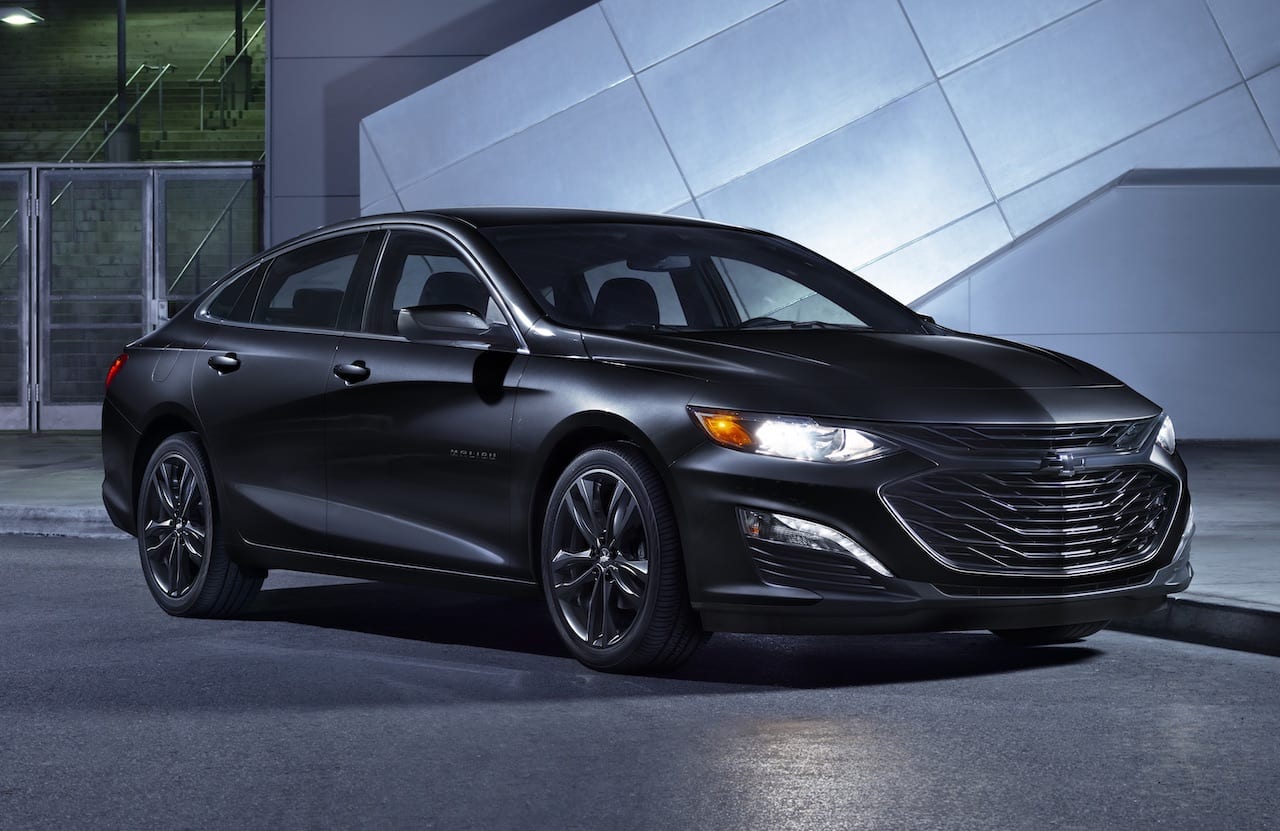
2. Chevrolet Malibu (2012–2016)
The Chevrolet Malibu experienced an identity shift in the early 2010s as it tried to move upmarket and compete more directly with premium midsize sedans. While the exterior styling and feature set were updated accordingly, the quality of the upholstery didn’t match the ambition.
In fact, models from 2012 to 2016 have been widely criticized for having some of the most problem-prone seat materials in the segment. Peeling, flaking, and surface cracking are not just common—they’re almost expected after a few years of ownership.
The root cause lies in GM’s use of bonded leather in these Malibu trims. Bonded leather is made by taking scraps of real leather, pressing them together with adhesives, and then applying a synthetic surface layer that mimics the appearance of real leather.
This surface layer, unfortunately, lacks durability. It often begins to bubble, separate, or peel after repeated exposure to friction, body heat, or sunlight. Owners typically report initial signs of degradation around the edges of seat bottoms and backrests, especially on the driver’s side.
Once the peeling begins, the deterioration accelerates. Unlike genuine leather, which can be conditioned or restored to some extent, bonded leather fails from the inside out. It doesn’t just look bad—it feels brittle and uncomfortable. Cracks quickly become tears, and the adhesive layers underneath tend to dry out, allowing pieces of the surface to flake off entirely. This makes cleaning difficult and results in a visually patchy, uneven seat that detracts significantly from the cabin’s overall presentation.
Interestingly, even the cloth variants of this generation of Malibu suffer from problems. The fabric used tends to compress and fade rapidly. Dark-colored cloth often turns gray or develops uneven wear patterns, particularly in sunny regions.
Cleaning this fabric also proves challenging, as the seat foam underneath is prone to absorbing moisture, leading to persistent odors and mildew in more humid climates. It’s not uncommon for older Malibus from this era to look years older than their actual age because of upholstery failures alone.
The lesson with the 2012–2016 Malibu is a clear one: surface appeal doesn’t always equal substance. Chevrolet made major interior design strides in later models, but these years remain a sore point for the brand. For anyone considering a used Malibu from this generation, it’s crucial to inspect the seats thoroughly. Minor cracks or early peeling may look cosmetic, but they tend to spread rapidly, and restoration can be more expensive than the vehicle’s market value justifies.
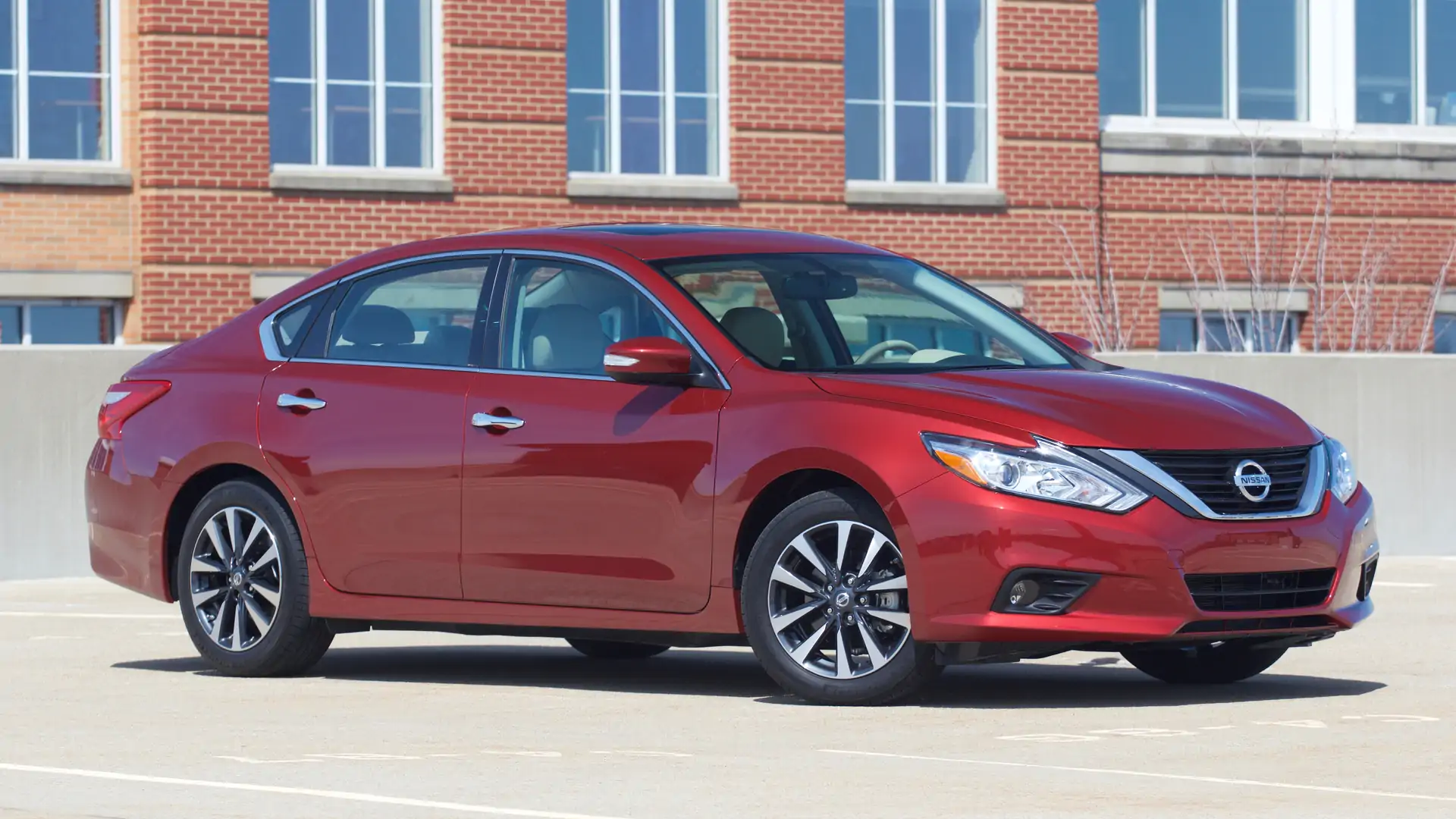
3. Nissan Altima (2013–2018)
The Nissan Altima, while often praised for its ride quality and affordability, has repeatedly come under fire for its underwhelming interior durability, most notably, the seat upholstery. Between the 2013 and 2018 model years, the Altima saw widespread complaints from owners about upholstery that simply couldn’t keep up with daily use. Both the cloth and faux leather materials used during this period are prone to premature aging, making the interior one of the vehicle’s weakest points.
Nissan’s leatherette option, used in many SV and SL trims, may feel soft initially but begins to deteriorate within just a few years, especially in hot climates or areas with intense sun exposure.
Unlike premium synthetics that maintain elasticity over time, this material stiffens, loses its sheen, and then begins to split or peel, especially where the seat bottom meets the backrest. This isn’t just an aesthetic issue—it also affects comfort, as the foam beneath becomes exposed and can compress unevenly.
The cloth options aren’t much better. While initially durable, the fabric often fades rapidly and tends to stain easily. In areas with high humidity or fluctuating temperatures, the cloth can develop unpleasant odors or even mold if not meticulously cleaned. Seat cushions also compress quickly, and the cloth begins to sag or wrinkle. Some owners have noted that the fabric separates from the foam backing, creating a “loose” look that makes the seats appear worn-out even if the car is only a few years old.
Nissan also seems to have skimped on stitching and trim reinforcement during these model years. Seat seams often start to separate, particularly along bolsters and headrest areas where tension is greatest. The problem compounds because once a seam gives way, the surrounding upholstery is more vulnerable to tearing. Repairs can be costly and often require full reupholstery due to the way the seats are assembled.
What’s especially frustrating is that these issues persist regardless of how well the interior is maintained. Owners who routinely clean and protect their upholstery still face cracking and peeling. It points to fundamental issues with material selection and construction.
For a vehicle in such a competitive segment, this oversight damages the Altima’s long-term value and has led many to consider alternative brands for their next purchase. Even though newer Altima models have improved, this generation’s reputation for poor upholstery durability lingers.
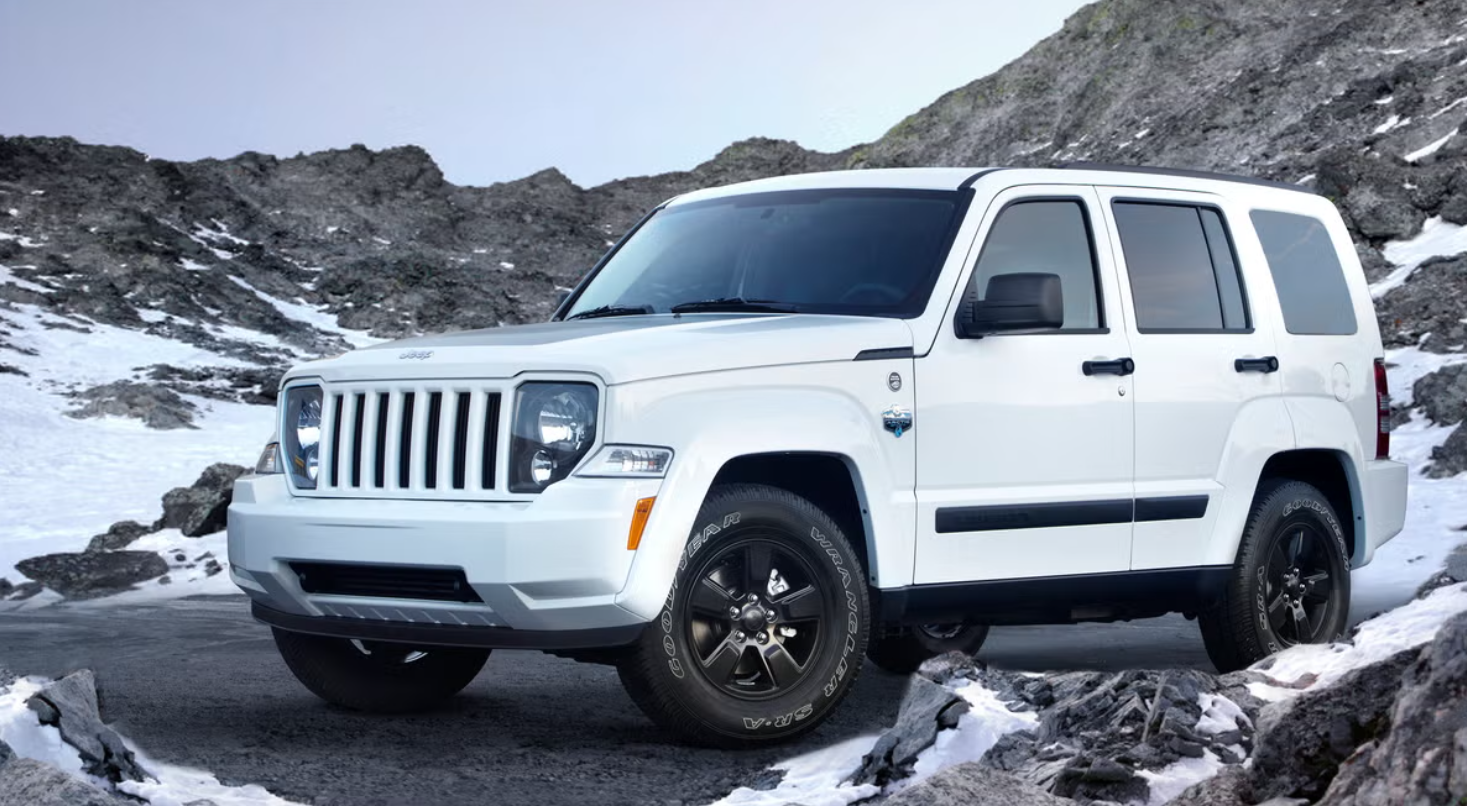
4. Jeep Liberty (2002–2012)
The Jeep Liberty was designed to blend rugged performance with compact-SUV convenience, but its interior materials—especially the upholstery—often told a different story. Throughout its production run, the Liberty was frequently equipped with substandard seat materials that failed to live up to the Jeep brand’s “go-anywhere” promise.
While the exterior and off-road chops were respectable, many owners found themselves dealing with peeling, cracking, or otherwise rapidly degrading seats before hitting the 100,000-mile mark.
One major culprit is the synthetic leather used in upper trims. Meant to give the Liberty a more upscale appearance, this faux leather aged poorly in real-world conditions. It dried out quickly in the sun and was particularly sensitive to temperature extremes.
Many owners reported cracking across seat surfaces, especially in the middle of seat cushions where pressure and body heat are highest. Over time, the cracking turned to peeling, with large pieces flaking off and exposing the cushioning below.
Even the cloth seats, typically seen in base models, were not much better. The fabric had a coarse weave and wasn’t treated to resist stains or fading. Prolonged exposure to sunlight often caused discoloration, and the material’s rough texture tended to trap dirt and grime.
Vacuuming and spot-cleaning only went so far; once the fabric wore thin, it was almost impossible to restore. The underlying foam was also prone to collapsing, which meant the seats not only looked bad but felt worse.
Another problem was the lack of refinement in Jeep’s interior construction at the time. Stitching quality was inconsistent, with many seams becoming weak or unraveled with time. The placement of seat seams and edges often coincided with high-stress areas, which accelerated failure. Coupled with hard plastic trim that rubbed against the seats, this led to a cascade of small durability issues that added up to a tired-looking cabin far earlier than expected.
For a vehicle that marketed itself toward adventurous drivers and outdoorsy families, this upholstery weakness felt like a major oversight. Jeeps are supposed to be tough, but in the Liberty’s case, the seats often couldn’t keep up with the lifestyle of the owners.
Today, used Jeep Libertys almost universally suffer from these cosmetic interior issues, even if the rest of the vehicle is mechanically sound. It serves as a cautionary example of how form without functional substance can undermine an otherwise competent SUV.
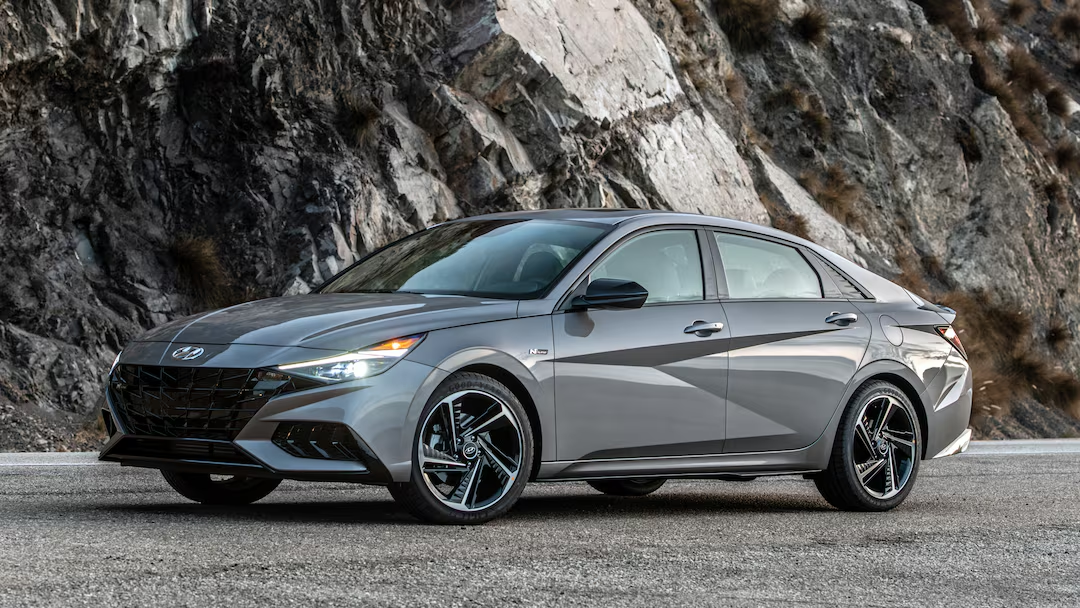
5. Hyundai Elantra (2007–2013)
The Hyundai Elantra has come a long way in recent years, but earlier generations, particularly between 2007 and 2013, suffered from serious shortcomings in interior durability. One of the most prominent complaints from long-term owners of these models centers on the upholstery. Hyundai prioritized affordability during these years, and that came with trade-offs: namely, materials that aged poorly and wore out quickly under regular use.
Cloth upholstery in these Elantras was basic to the point of being fragile. The fabric had a looser weave and minimal backing, which led to pilling, fading, and even tearing after a few years of use. Many owners found themselves dealing with threadbare patches where they entered and exited the vehicle, especially on the driver’s side bolster. Stains also proved difficult to remove due to the absorbent nature of the fabric, and once embedded, dirt tended to dull the overall appearance of the interior.
Higher trims with faux leather fared no better—and arguably worse. The synthetic material used lacked flexibility and quickly became brittle when exposed to heat or body oils.
Cracking began along stitched seams and creases, eventually evolving into widespread peeling. Unlike luxury-grade synthetics that offer some level of elasticity and aging grace, the Elantra’s faux leather looked good new but aged like laminated cardboard. This was especially evident in sunbelt states, where daily heat cooked the seats even with sunshades in use.
Hyundai’s interior fit and finish during this period also contributed to the issue. Seat cushions lost their shape quickly, seams were inconsistently reinforced, and plastic seat trims caused abrasion against the upholstery.
Add to this the Elantra’s tight cabin space, which meant more frequent contact with seat edges, and you had a recipe for premature wear. Seat covers became almost mandatory for anyone hoping to preserve the factory look beyond the warranty period.
In summary, while the Elantra of the late 2000s and early 2010s offered excellent fuel efficiency and strong warranty support, its interior didn’t hold up. The upholstery issues were symptomatic of a brand still finding its footing. Thankfully, Hyundai has since improved dramatically in this area, but buyers considering older models should be prepared for interiors that age much faster than the powertrain beneath them.
Also Read: 5 Cars With Accessible Maintenance and 5 That Are a Nightmare to Service
As we’ve seen in this detailed breakdown, not all vehicle interiors are created equal. While many automakers pride themselves on advanced tech and sleek exteriors, the upholstery often tells the real story of a car’s long-term quality.
The difference between a car that feels fresh and inviting after five or ten years versus one that looks tired, cracked, and neglected often comes down to a few critical interior decisions—namely, the quality of materials used, the durability of stitching, and how well those materials withstand environmental and physical stress.
The vehicles that made it into our durability list—including stalwarts like the Toyota 4Runner, Honda CR-V, Subaru Outback, Ford F-150, and Lexus RX—all have something in common. They pair smart design with time-tested materials. Whether it’s Toyota’s robust SofTex synthetic leather or Subaru’s adventure-ready StarTex, these manufacturers have invested in seat surfaces that balance comfort, longevity, and resistance to real-world wear.
They haven’t cut corners just to look good in the showroom. Instead, they’ve considered how a seat feels and performs after years of passengers sliding in and out, cargo scraping across the bench, or sun and sweat taking their toll.
Contrast that with the vehicles in our peeling and cracking list, such as the Dodge Journey, Chevrolet Malibu, Nissan Altima, Jeep Liberty, and Hyundai Elantra. These models, while often praised for price or performance, are frequently let down by upholstery that simply doesn’t hold up.
Whether it’s cheap bonded leather that flakes off like old paint or cloth that fades, pills, and absorbs odors, these vehicles show their age far sooner than their powertrains. And while some of these interiors may look decent at first glance, they deteriorate in ways that are both frustrating and costly to fix.
This issue becomes even more important in today’s market, where more consumers are holding on to vehicles for longer periods. The average car on the road today is over 12 years old, and while drivetrains are lasting longer thanks to modern engineering, interiors often don’t match that longevity. A cracked, stained, or peeling seat may not affect the performance of the vehicle, but it certainly impacts the ownership experience and resale value.
Furthermore, the environments we drive in vary widely. A material that might hold up in a mild coastal climate can crumble under the pressure of a desert summer or a snow-heavy winter.
Upholstery that doesn’t resist UV rays, moisture, or extreme temperatures is a weak link that shows itself quickly. This is why materials like Ford’s heavy-duty vinyl or Lexus’s semi-aniline leather stand out—they’re designed to resist environmental damage as much as everyday use.
There’s also a lifestyle consideration. If you’re a parent with young children, a pet owner, an outdoor enthusiast, or someone who uses their vehicle for work, your seats endure more than average wear. That makes durable, easy-to-clean materials not just a convenience but a necessity. Vehicles that offer that blend of resilience and comfort will save owners money, frustration, and the need for aftermarket fixes down the road.
In conclusion, upholstery might not be the flashiest feature on a spec sheet, but it’s among the most telling indicators of long-term quality. Whether you’re buying new or used, evaluating the strength, material, and history of a vehicle’s seats should be a key part of your decision. Invest wisely, and you’ll be rewarded with a car that looks and feels great for years. Overlook it, and you might find yourself regretting a decision every time you climb into the driver’s seat.

